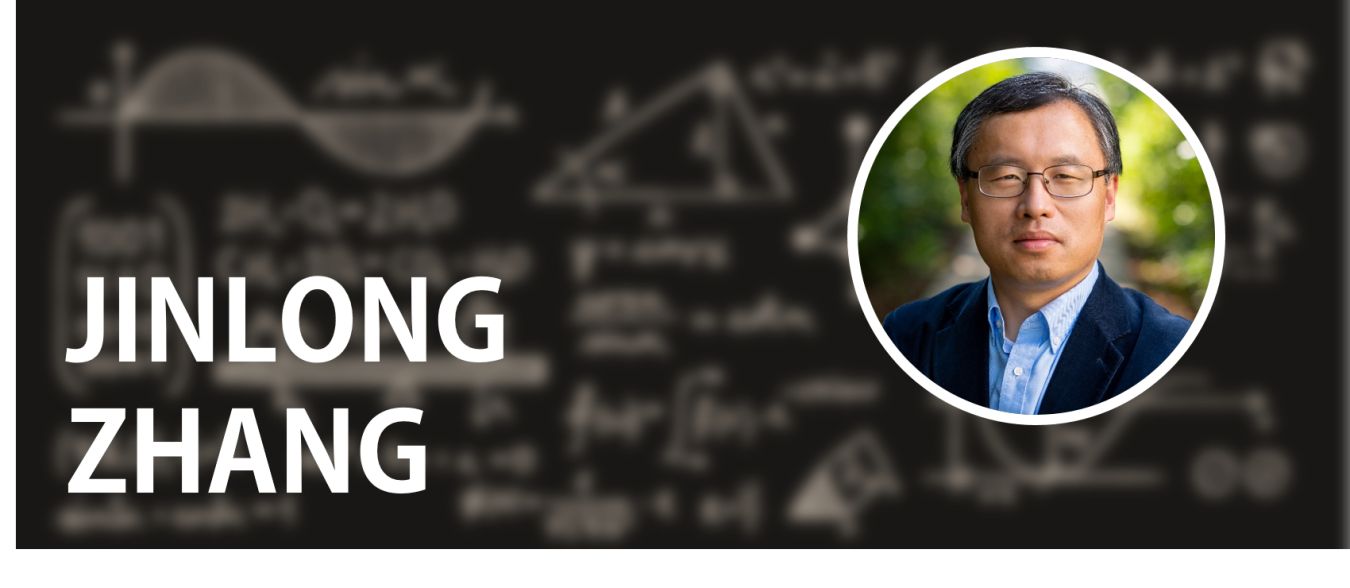Jinlong Zhang is enhancing the selection and collection capabilities for data on the ATLAS and DAQ systems at CERN’s particle physics experiments.
November 22, 2021
WHAT DID THE 2011 EARLY CAREER AWARD ALLOW YOU TO DO?
ATLAS is a multi-purpose particle physics detector at the Large Hadron Collider (LHC) at CERN. It is designed to exploit the great discovery potential and a wide range of physics opportunities that arise from high energy collisions at the LHC. Scientists use precision experimental measurements to answer fundamental questions of our universe. These studies led to the ground-breaking discovery of the Higgs boson in 2012, and moving forward, could unveil new physics beyond the Standard Model of particle physics by accumulating more experimental data.
The ATLAS experiment can observe over a billion proton-proton collisions per second, with a total data volume of more than 60 terabytes per second. However, only a small fraction of these events contains indicative features that might be associated with new discoveries.
To reduce the data rate, ATLAS uses a trigger system, which rapidly selects events by distinguishing characteristic features for subsequent detailed analysis, and a data acquisition (DAQ) system, which collects the data from different detector subsystems to computational storage. The trigger and DAQ systems require sophisticated hardware and software to process and collect the large amount of data within a very limited time.
DOE’s Early Career Research Award allowed me to perform R&D to further enhance the capability of the trigger and DAQ systems of the ATLAS experiment and to engage in exciting physics studies.
For the trigger system, custom electronics were designed and tested for massive parallelism and low latency response times. These activities make it possible to process the data at a very high rate in order to construct more advanced information such as identifying charged particles from particle signatures produced through the LHC collisions. We can, therefore, apply more complex algorithms at subsequent stages to achieve better physics results.
For the DAQ system, my work enabled the data transmission from the ATLAS detector more flexible and capable by utilizing commodity (“off-the-shelf”) hardware and new and emerging technologies.
Overall, these activities have advanced the ATLAS experiment’s detector capabilities by enabling smoother operations, enhanced performance of its trigger, and achieving fruitful physics results. The outcome of the work will also help design and optimize the trigger and DAQ systems for the future High-Luminosity LHC era when ATLAS will operate at much higher data rates from LHC collisions.
ABOUT:
Jinlong Zhang is a staff scientist at the Argonne National Laboratory.
SUPPORTING THE DOE SC MISSION:
The Early Career Research Program provides financial support that is foundational to early career investigators, enabling them to define and direct independent research in areas important to DOE missions. The development of outstanding scientists and research leaders is of paramount importance to the Department of Energy Office of Science. By investing in the next generation of researchers, the Office of Science champions lifelong careers in discovery science.
For more information, please go to the Early Career Research Program.
THE 2011 PROJECT ABSTRACT:
Enhancement of the Trigger Capability for New Physics at the Large Hadron Collider
The Large Hadron Collider (LHC) is designed to address some of the most fundamental questions of physics by producing rare events of new physics in the tremendous background. To increase the sensitivity to new physics, the availability of more sophisticated event characteristics at early trigger stages will be crucial to ensure high background rejection with high signal efficiency. The track information of the event is reconstructed typically with reiterative software on CPUs (central processing units) and is very time consuming in the LHC environment. The research will involve the designing and building of a hardware system with massively parallel processing that will reconstruct global tracks with near‐offline resolution. Subsequently, sophisticated algorithms will combine the precisely reconstructed tracks with other trigger information to perform early background rejection and signature identification. This will substantially improve the potential for new physics discoveries.
RESOURCES:
ATLAS Collaboration, “Observation of Higgs boson production in association with a top quark pair at the LHC with the ATLAS detector.” Phys. Lett. B 784, 173 (2018). [DOI: 10.1016/j.physletb.2018.07.035]
ATLAS Collaboration, “Technical Design Report for the Phase-II Upgrade of the ATLAS TDAQ System.” CERN-LHCC-2017-020 ; ATLAS-TDR-029. http://cds.cern.ch/record/2285584
ATLAS Collaboration, “Search for W' →tb →qq'bb decays in pp collisions at √s=8 TeV with the ATLAS detector.” Eur. Phys. J. C 75, (2015). [DOI: 10.1140/epjc/s10052-015-3372-2 ]
DOE Explains… offers straightforward explanations of key words and concepts in fundamental science. It also describes how these concepts apply to the work that the Department of Energy’s Office of Science conducts as it helps the United States excel in research across the scientific spectrum. For more information on the Standard Model of Particle Physics and the Higgs bosun, and DOE’s research in this area, please go to “DOE Explains… the Higgs Boson” and “DOE Explains…the Standard Model of Particle Physics.”
Additional profiles of the Early Career Research Program award recipients can be found on the Early Career Program Page.
The Office of Science is the single largest supporter of basic research in the physical sciences in the United States and is working to address some of the most pressing challenges of our time. For more information, please visit www.energy.gov/science.
Sandra Allen McLean

Sandra Allen McLean (sandra.mclean@science.doe.gov) is a communications specialist for the Office of Science in the Office of Communications and Public Affairs. Sandra is responsible for identifying, curating, or creating lay-language content about Office of Science-funded research for DOE web sites, popular and trade media, and stakeholder education. She researches and writes the historical Milestone Tweets for the office Twitter account @DOEScience.
Sandra holds an associate degree in American Sign Language interpreting, a bachelor’s in science journalism and biology, and a master’s in Information Sciences. Her hobbies are sewing – especially costumes! – and lesesucht, compounded by extreme tsundoku.


